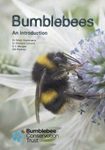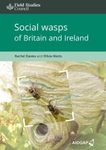By
Leon (NHBS Catalogue Editor)
4 Sep 2019
Written for Hardback

The honey bee has a very positive reputation: a clever, industrious insect that organises itself in remarkably collaborative societies. But bee researchers Robin Moritz and Robin Crewe want to balance this picture. Yes, bee colonies are a marvel, but once you stop focusing on the level of the colony, all sorts of imperfections become apparent: cheating, robberies, regicide, euthanasia, evolutionary maladaptations, illogical reproductive strategies, etc. Welcome to The Dark Side of the Hive<.
The authors make it clear from the start that their book is less controversial than you might think, nor are they suggesting that previous work needs revising or reconsidering. They make a point of writing how excellent existing research is in their opinion, mentioning books such as
The Biology of the Honey Bee,
Bees as Superorganisms,
The Spirit of the Hive, and especially the work of Thomas Seeley (
Honeybee Ecology,
The Wisdom of the Hive, and
Honeybee Democracy). However. Going by these books alone you might get a rosy picture of honey bees and think of colonies as harmonious and perfect cooperatives. So, Moritz & Crewe want to enrich our understanding of the honey bee by, well, enlightening us on their darker side.
With that carefully formulated mission statement, the authors present a relatively short book, spreading eleven chapters over 158 pages. The first few of these set the stage a bit, providing background on honey bee evolution, diet and the production and function of honey, and the use of smell (olfactory cues) and volatile chemicals in communication. There is little that the authors can pick on in these topics, and even a purported oddity in the type of pheromones used in olfaction is easily explained.
It is once we get to sex and reproduction that things get interesting and, well, odd. Take the queen. As opposed to many other social insects, there is only one queen – no spares allowed. As soon as the young queen hatches she commits regicide, killing any other developing queens. The evolutionarily remarkable thing is that she does this *before* mating (queens of an African subspecies at least wait until *after* mating). This is a risky strategy, especially because she leaves the safety of the hive to go on her once-in-a-lifetime mating flight. What is that all about? The queens of certain stingless bees at least are sensible enough to have sex on their doorstep. Many other oddities are covered and Moritz & Crewe also delve into more theoretical aspects such as inclusive fitness theory. Honey bees are terrible poster children for this, as the queen mates with tens of males, making for a worker brood with low relatedness.
Beyond her majesty, the rest of the swarm can be equally inefficient and cruel. Female workers routinely euthanise sick developing brood, whereas diseased adults are either evicted or simply dismembered on the spot. Some nest parasites, on the other hand, are locked up in little wax prisons and fed. Why? Possibly they exploit some weakness in the bees’ communication system, but stingless bees simply kill such parasites by smothering them in resin, wax, and mud. And those hexagonal cells? Generations of scholars have pondered how workers tackle this geometrical challenge until people pointed out that they don’t. Freshly constructed cells are round(ish) in shape and it is the physical properties of the settling wax that results in hexagonal cells.
Males, known as drones, contribute nothing more than their genetic payload in an act that literally sees them pump all their hemolymph (the insect equivalent of blood) into their endophallus, rupturing it in the process, after which they drop dead. (This is the point at which half the audience grimaces.) And even that wonderful waggle dance (see
The Dancing Bees) is not entirely error-free – the authors describe a case of workers collecting inedible seed kernels from a bird feeder (see the book’s cover), suggesting there is little feedback about food quality coming back from the hive.
These are but some of the biological idiosyncrasies that Moritz & Crewe highlight. Despite these imperfections, honey bees are an evolutionary success story. A recurring theme is that many oddities can be explained by evolution having to make do with whatever (developmental) material is at hand. Another theme, as also recently argued by Daniel S. Milo, is that evolution in biological systems is about finding feasible rather than optimal solutions (see my review of
Good Enough).
Beyond the biology, the authors are not afraid to highlight the dark side of apiculture (i.e. beekeeping). Apiaries form unnatural concentrations of beehives, making disease transmission easier, and commercial migratory beekeeping for crop pollination worsens this (the same California almond groves that made an appearance in
Buzz: The Nature and Necessity of Bees are discussed here). Particularly revealing has been the response to the
Varroa destructor mite. There is research showing that colonies can evolve natural resistance if given the time (though many colonies did not survive in these experiments). Instead, beekeepers try to salvage an already fraught situation by reaching for pesticides. Seeley’s latest book,
The Lives of Bees, similarly advocates that beekeepers stop trying to fight natural selection and adopt a more Darwinian approach.
The Dark Side of the Hive gets technical in places and despite the presence of helpful explanatory boxes, some jargon is not clearly defined (e.g. queenright colonies, physogastric queens). Usually, you can figure it out from the context, but a short glossary would have been helpful. The book furthermore contains quite a few illustrations where photos have been redrawn using an interlacing effect (remember the horizontal scan lines on old TV sets?). Since many of these images are already small and in greyscale, much detail is lost and sometimes I could not tell what I was looking at, so I was not terribly convinced by this stylistic choice.
Those quibbles notwithstanding,
The Dark Side of the Hive offers a fascinating look at this well-studied insect. For entomologists and beekeepers, this is a must-read, but anyone with an interest in (social) insects or evolutionary biology can safely pick this up. Moritz & Crewe succeed admirably in their goal: to enrich our understanding of honey bees without overturning the existing body of research or taking away from the marvellous creatures that they are. In the process, they throw up plenty of interesting questions for future research.





































